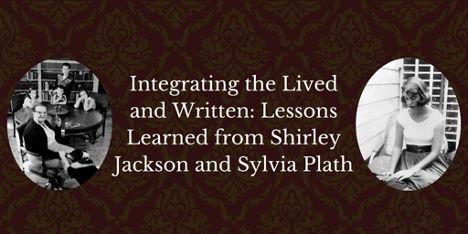As writers, our lives and shared histories all serve as fodder for our work. Not only does our medium allow us to immortalize these instances, but to process our feelings, cultural contexts, and preconceived notions. Even still, the act of artistic self-disclosure can often grow far too on the nose, causing your work to lose its literary merit. While this sort of processing can be excellent for the writer themselves, readers may struggle to understand without the additional context or emotional connection of those directly involved. Given the deeply personal nature of mediums such as poetry and creative nonfiction, personal or community-centric content may seem more easily doable. However, this does not mean that reality-based fiction is impossible–far from it! Two specific pieces of literature, widely considered to be canonized, that famously utilize community and personal knowledge are Sylvia Plath’s The Bell Jar and Shirley Jackson’s Hangsaman. We can look to techniques used by these classics to see how we can successfully and seamlessly stitch together fact with fiction. While classic American literature is far from the literary end-all-be-all, the sheer scale of scholarly reverence for these two novels further proves that the experiences of oneself and their community will forever be worthy of praise and critical analysis.
Published in 1951, Hangsaman by Shirley Jackson is a gothic horror mainstay following the inner world of Natalie Waite, a college freshman whose time is split between reality and her otherworldly delusions. This bildungsroman is a vital text in the development of the female gothic, showcasing the horrors associated with female gender normativity through the supernatural. Aside from Jackson’s musings on sexual violence, the over-sexualization of young women, and the rigid hierarchies of academia, Hangsaman comments on the disappearance of a real college student. Paula Jean Welden disappeared in Bennington, Vermont in 1946–just one year after the Jacksons moved to a home nearby. Jackson’s husband, Stanley Hyman, even taught at Bennington College, where Welden was attending at the time of her untimely disappearance. Needless to say, the gravely mishandled disappearance of this young girl shook Jackson and her community incredibly deeply. Hangsaman utilizes oral histories, regional knowledge, and communal grief to weave together to tell both her story and Paula’s. Well-researched stories from your community can strengthen your writing and become the seed for fiction based in fact.
Published in 1963 under the pseudonym Victoria Lucas, Sylvia Plath’s The Bell Jar is a widely read semi-autobiographical novel that details Plath’s drastic decline in mental wellness, subsequent disappearance, and later re-emergence. The Bell Jar is Plath’s only novel, as her career’s primary focus was poetry. One leaves themselves on the page with autobiographical poetry, exemplified by Plath’s poem “Daddy”, which has been interpreted as a work of autobiography. This all being said, at no point in the novel’s run does it identify as a work of autobiography. At its release, The Bell Jar was marketed as a work of pure fiction. Further still–the book cloaks Plath in yet another mask of anonymity, with the novel’s protagonist and narrator being named Esther Greenwood. Nothing about this character screams autofiction, instead, Esther comes across as the characterization of the writer’s deep and furling mental illness. The book’s autobiographical basis is only revealed through research on Plath’s life as a young woman, as her disappearance resulted in a media frenzy. In fact, with the utilization of a pseudonym, Plath managed to even further separate herself from the horrific reality that she outlined.
I am in no way suggesting that you change your name, face, and social security number to craft some autofiction, however, Plath’s subtlety does speak volumes. The novel’s graphic self-disclosure hits the audience incredibly hard. Yet, the fictional framing does not distract the reader–leading them to spend more energy interrogating Plath’s life story rather than critically ingesting what she chose to feed them. I feel that this is The Bell Jar’s greatest lesson regarding self-disclosure in fiction: It’s okay to let your story speak for itself. Your writing will not necessarily benefit from the inclusion of overt self-insertion unless its purpose is deliberate and beneficial to the work overall.
Meet the blogger:
 ALEX SIREK is a senior studying English, creative writing, and cultural rhetoric. She is the editor-in-chief of Untold Magazine, a senior columnist at The Oracle, and the president of Hamline University’s Student Media Board. She is also currently interning at The Loft Literary Center. Outside of work and academia, Alex is an avid fan of gothic horror, estate sales, and watching squirrels from her kitchen window.
ALEX SIREK is a senior studying English, creative writing, and cultural rhetoric. She is the editor-in-chief of Untold Magazine, a senior columnist at The Oracle, and the president of Hamline University’s Student Media Board. She is also currently interning at The Loft Literary Center. Outside of work and academia, Alex is an avid fan of gothic horror, estate sales, and watching squirrels from her kitchen window.


